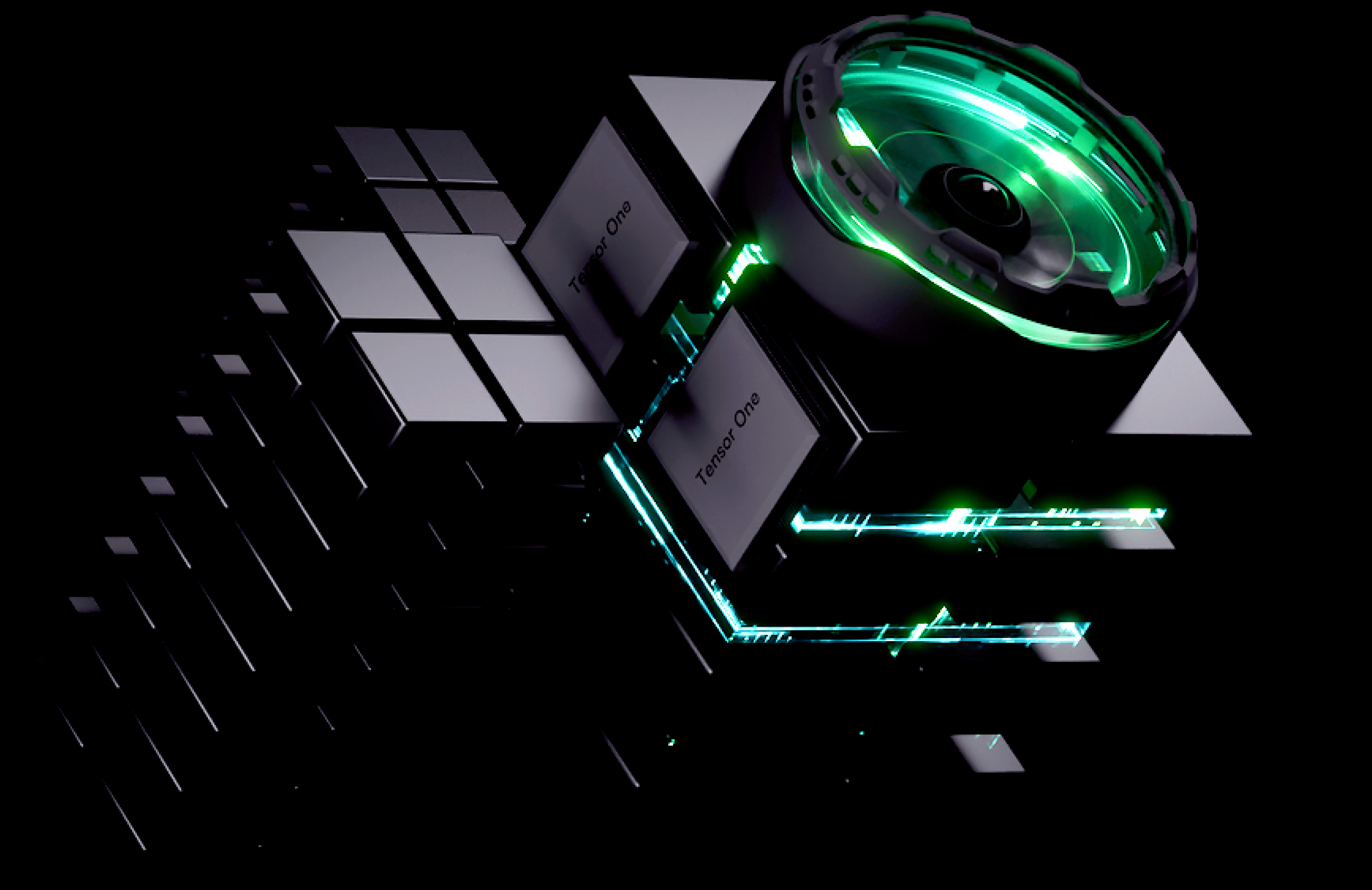Core Technologies
Hypervisor VMM
hypervisor-vmm: GPU Virtualization Engine for TensorOne.
hypervisor-vmm is the low-level engine that powers TensorOne’s GPU Virtual Private Servers (VPS). It abstracts bare-metal GPU instances into scalable, isolated compute environments optimized for high-throughput machine learning (ML), AI inference, and containerized workloads.

What is a Virtual Machine Monitor (VMM)?
A Virtual Machine Monitor (VMM), or hypervisor, is a lightweight, high-efficiency execution layer responsible for:
- Virtualizing hardware-level GPU access
- Isolating cluster workloads
- Enforcing multi-tenant execution safety
- Enabling container-to-GPU passthrough
Unlike traditional hypervisors, hypervisor-vmm is container-native, optimized for Ubuntu-based containers, direct NVLink passthrough, and near-zero Docker image mounting overhead.
Key Technologies
GPU Passthrough
TensorOne clusters use real NVIDIA GPUs (e.g., A100, RTX 3090, A6000) via direct PCIe passthrough:
[ Container ] ↔ [ hypervisor-vmm ] ↔ [ PCIe → Physical GPU ]
This configuration ensures:
- Full CUDA compatibility
- Maximum VRAM access
- Compatibility with ML libraries (e.g., PyTorch, TensorFlow)
- Real-time metrics: memory, utilization, temperature
Dynamic Resource Mapping
Each cluster is provisioned with a dynamic profile:
- vCPU: Dedicated logical CPUs
- RAM: DDR5 slices with bandwidth isolation
- Storage:
- Ephemeral Container Disk (non-persistent, fast I/O)
- Persistent Volume (durable, reboot-safe)
Resources can be dynamically scaled via the GraphQL API or tensoronecli.
Secure Multi-Tenant Scheduling
To enforce secure, isolated execution across shared infrastructure:
- AppArmor & Seccomp enforcement per container
- Encrypted TLS proxy communication
- Automatic idle timeouts & sandboxing
This allows multiple public endpoints to run safely on shared GPU hosts.
Boot Flow Architecture
graph TD
A[Project Template] --> B[hypervisor-vmm]
B --> C[Container Provisioning]
C --> D[GPU & Disk Binding]
D --> E[Runtime Session]
E --> F[Web Proxy / Serverless Endpoint]
Each project deployment initializes from a template, attaches to physical GPU/disk resources via hypervisor-vmm, and is then exposed via runtime proxies.
Developer-Facing Interfaces
You can control hypervisor-backed compute environments through:
GraphQL SDK:
clusterFindAndDeployOnDemandclusterRentInterruptable
TensorOne CLI:
tensoronecli create clusterstensoronecli start cluster
Environment Variables:
TENSORONE_CLUSTER_IDTENSORONE_API_KEY
Optimized for Machine Learning
The hypervisor-vmm is designed for ML workflows:
- Optimized disk I/O for rapid model loading
- NVLink-enabled for multi-GPU workloads
- Integrated with endpoint auto-scalers
Try it Out
Launch a development cluster using the CLI:
tensoronecli create clusters \
--gpuType "NVIDIA A100" \
--imageName "tensorone/llm-starter" \
--containerDiskSize 20 \
--volumeSize 40 \
--mem 32 \
--args "python run.py"
For more details, refer to the Managing Clusters and GraphQL Configuration Reference